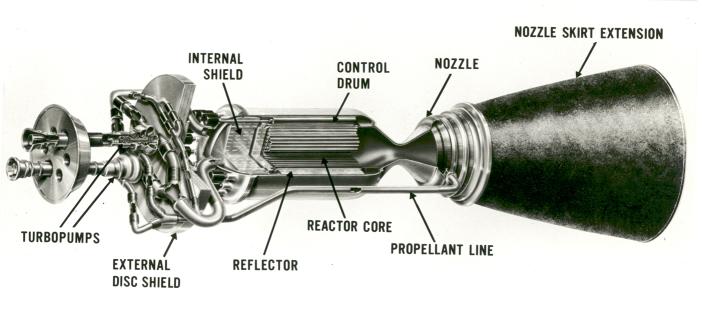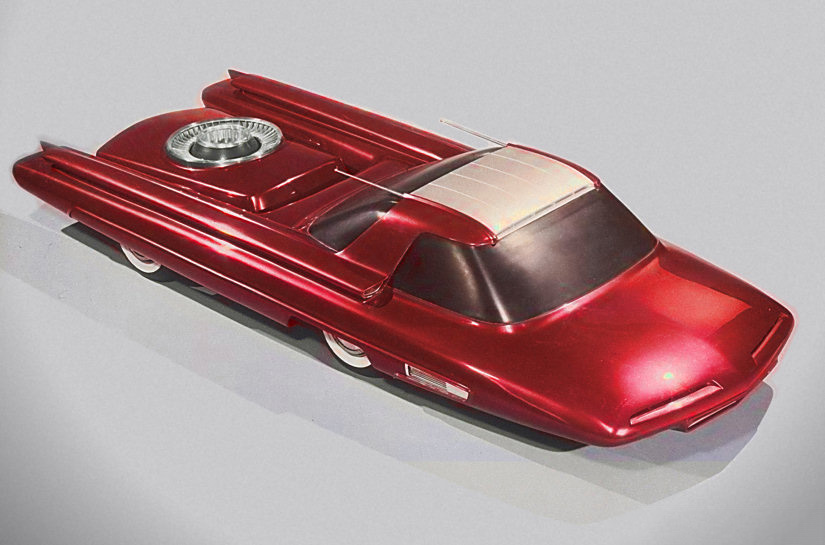
Where are all the clean, infinite-range nuclear-powered cars, ships, and planes?
This morning I found myself pondering a particularly interesting question: Where are all the nuclear-powered cars, ships, and planes? Nuclear power is cleaner than fossil fuel power, it generates more power than fossil power (i.e. it goes faster) while weighing significantly less, and you can go years without ever having to refuel a nuclear vehicle. Imagine if you could drive a nuclear-powered Tesla Model S or Ford Escape off the forecourt, and never had to refuel it for the entirety of its operational life. So, where are all the nuclear vehicles? Were they kiboshed by the ecologists? Is it yet another conspiracy hatched by Big Oil to maintain their juicy fossil fuel profits?
The advantages of nuclear powered vehicles
As far as large-scale grid power generation goes, we’ve spent thousands of words on ExtremeTech discussing how nuclear power is far superior to coal, oil, and natural gas. Nuclear power is cleaner than fossil power, causes few deaths, has higher power and energy density, and a single fuel rod lasts so long that you’d probably never need to refuel (plus, the space and weight saved from not having to carry fossil fuels would further increase efficiency and storage capacity).
In the case of a nuclear car, you would probably be able to drive hundreds of thousands of miles before having to refuel. A nuclear warplane would stay up in the skies forever — or a commercial jetliner could fly all the way from London to Sydney without refueling.
Some of the biggest gains, though, would probably come from nuclear-powered cargo ships. The largest container ships, like those operated by Maersk, consume upwards of 10,000 liters (2,600 US gallons) of diesel per hour. It has been estimated that just 15 large container ships produce as much pollution as all of the world’s billion-or-so cars combined — and there are thousands of container ships currently at sea. Nuclear cargo ships would put a serious dent in global greenhouse gas emissions.
The disadvantages of nuclear powered vehicles
With all that said, nuclear power isn’t without its issues — and yes, there have been attempts in the past to make nuclear cars, planes, and ships.
The main problem, as you can probably guess, is radiation. Poor shielding could result in a messy end for the occupants of a nuclear vehicle, and any kind of containment leak would be bad news for the environment. Generally, the problem with good-enough shielding is that it tends to be heavy — and planes and cars aren’t fans of extra weight. Both the US and Soviet Union researched the possibility of nuclear-powered bombers during the Cold War. These bombers would carry thermonuclear bombs and would act as the perfect omnipresent nuclear deterrents. The heavy shielding requirement, plus the development of thermonuclear ICBMs and nuclear submarines in the 1960s, meant that these nuclear aircraft never took off.
The NS Savannah, one of the few nuclear-powered passenger ships ever built (by the US of course), dumped low-level radioactive waste into the ocean — the waste didn’t actually harm the environment very much, but as you’ve probably realized by now, the media and public (and thus politicians) are hyper-sensitive when it comes to any kind of nuclear-related mishap.
So, what about my nuclear powered car?
As I’ve alluded to, there are actually a few nuclear-powered vehicles in existence — but, as far as I’m aware, they’re all military ships, icebreakers, and submarines. In these extreme cases, where you need a lot of power and the ability to stay at sea for months or years on end, nuclear power is the only option.
Newer container ships are moving towards more efficient diesel engines that reduce emissions significantly. A few ship-building companies are looking at the possibility of nuclear power, but I doubt anything will happen soon. [Read: Nuclear power is our only hope, or, the greatest environmentalist hypocrisy of all time.]
As far as nuclear-powered aircraft go, I don’t think anyone has looked at it seriously since the ’60s. It would be useful to have an airplane that can stay up in the air forever, but it probably just isn’t worth the massive R&D cost when both the military and civilians already have access to in-flight refueling. While researching this story I did stumble across the nuclear thermal rocket, though — a rocket that uses a nuclear reactor to ignite hydrogen fuel. This saves a lot of weight as you don’t need a separate oxidizer like oxygen. NASA is apparently looking at the possibility of a nuclear thermal rocket for use in future space launch systems.
Which brings us to cars. To this day, the closest we’ve ever come to a nuclear car is the Ford Nucleon, a 1958 scale model concept car that would’ve used a nuclear reactor paired with a steam engine (much like nuclear submarines or icebreakers). At the time, there was no nuclear reactor small enough to squeeze into a car, and so it never became more than a concept. (As you can probably tell, the ’50s and ’60s — the heyday of optimistic nuclear research — were probably the last time that nuclear power wasn’t despised by the public.)
The problem is, even as we sit on the cusp of super-clean fourth-generation (Gen IV) nuclear power, reactors are still really, really big. A small nuclear reactor is generally classified as anything that generates less than 300 megawatts of electricity. The combustion engine in your car, on the other hand, generates 150 kilowatts, or about 2,000 times less power. Even the smallest of modular Gen IV reactors, which pump out around 25 megawatts of electrical power, weigh about 50 tons. A lot of that is shielding, of course — but if you’re going to be driving around at 100 mph with a nuclear reactor in the trunk, some strong shielding is probably a good idea. [Read: Russia bets its energy future on waste-free fast breeder nuclear reactors.]
For now, then, nuclear cars remain thoroughly unfeasible. They might not always be so, though. There is a definite trend towards smaller, safer, modular nuclear reactors — and there’s no reason that trend won’t continue. There’s also the fact that no one has really tried to build a car-sized nuclear reactor, so it’s no surprise that they generally weigh hundreds of tons.
This doesn’t mean that you should give up on your dream of a clean, infinite-range car, though. It’s still possible, if we install a bunch of nuclear power stations and then build an electrified road system that charges our cars while we drive. And then there’s NASA, which is slowly working away on small cold fusion reactors that could comfortably fit in a plane or car. One day, my friends, one day.
Author: By Sebastian Anthony




